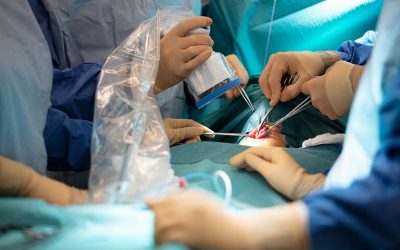The thyroid, a little gland of only 5 cm is very important for every one of us, it is essential to the good functioning of our metabolism. A dysfunction of this hormonal gland can create a global activity disorder and energy consumption. When the thyroid produces hormones in excess, the whole body will be in hypermetabolism. On another hand, when there is a lack of production of thyroid hormones, the body will be in hypometabolism and in a global slowdown.
We’ll see in this article how to diagnose hypothyroidism and what type of criteria is used to monitor it.
Hypothyroidism: hypometabolism and global slowdown
As we have seen, when someone suffers from hypothyroidism, the body is in hypometabolism condition : tiredness, hair loss, damaged nails, constipation, overweight, slow heart rate, dried skin. This abnormality is discovered when the practitioner has a clinical suspicion of a thyroid dysfunction, with one of these evocating clinical signs. The doctor will ask for a blood test including the TSH level as a first step.
Also read: our article on * How to detect thyroid dysfunction?
When a patient suffers from hypothyroidism, the thyroid gland doesn’t produce enough thyroid hormones. T3 and T4 hormones can no longer bind into their respective receptors and act on their various receptor organs. There are several causes of this thyroid hormone deficiency: a gland anomaly itself, in this case hypothyroidism will be called primitive or peripheral, or it can be caused by abnormalities of the hypothalamic-pituitary structures, in the second case hypothyroidism will be called central or secondary.
Several reasons of peripheral hypothyroidism exist, they are the most common causes:
- autoimmune thyroiditis: Hashimoto’s disease
- non-autoimmune thyroiditis: Quervain’s thyroiditis, postpartum thyroiditis
- iatrogenic causes: radiotherapy, iodine 131
- severe congenital iodine deficiency, more rarely.
Central hypothyroidism is also called thyroid insufficiency and this cause is much rarer than primary hypothyroidism. Several etiologies of thyroid insufficiency exist too: tumor compression, consequences after surgery or radiotherapy of this particular area, consequences of infection such as meningitis…
Are there different types of hypothyroidism?
There are two types of hypothyroidism: real hypothyroidism and subclinical hypothyroidism.
Real hypothyroidism is defined by clinical signs of hypometabolism associated with a TSH superior to 4 mIU/L and a low T4L hormone. When the hypothyroidism is “true”, the hormonal gland is not able to produce enough thyroid hormones and the pituitary gland produces more TSH to stimulate it, which will be higher than 4mIU/L. There are many and various clinical symptoms of an underactive thyroid. This type of hypothyroidism is treated with thyroid hormone supplementation, the given quantity has to be balanced and adjusted according to the need of each patient and the TSH rate.
Subclinical hypothyroidism, also known as asymptomatic hypothyroidism, is defined with an elevated TSH level (superior at 4 mIU/L) associated with a normal thyroid hormone level. This asymptomatic hypothyroidism is symptomless and can be caused by several circumstances such as a transitory thyroid inflammation completely painless. The evolution of this abnormality into a “real” hypothyroidism is not fully proven, however, one third of patients with subclinical hypothyroidism may subsequently develop true hypothyroidism in the future. This asymptomatic form will be treated only if the TSH level is very high and above 10 mIU/L.
Hashimoto’s disease is a main cause of true hypothyroidism. It is an autoimmune disease, the body produces destructive antibodies against the thyroid gland, the thyroid will no longer be able to function properly. The patient will have a solid and irregular goiter and anti-thyroperoxidase antibodies will be found on his biological analysis.
Would you like to know more about the normal size of a thyroid gland?
How to monitor an underactive thyroid ?
Hypothyroidism is treated with T4 hormone supplementation, better known as Levothyroxine. When the disease and his etiology are discovered, the treatment starts progressively and the hypothyroidism has to be controlled until the perfect balance between the clinical and biological manifestations of the patient is found. Thyroid hormone requirements are approximately 1 to 1.5 ug/kg/d.
First treatment step : back to balance
In the beginning, the treatment will be administered at low dose and the doctor will increase the amount carefully according to the TSH level to adjust the medication. By providing thyroid hormone supplementation, the pituitary gland understands that it is no longer necessary to produce TSH in excess and this level will progressively decrease with the intake of Levothyroxine.
This indicator can be used to monitor hypothyroidism. The TSH level is usually between 0.4 and 2.5 mIU/L, and must be less than 4 in all cases to be considered as normal.
Second step : continuous monitoring
Once the perfect balance is found with oral therapy, hypothyroidism is monitored with a blood test once a year, specifically to check if the TSH level is less than 4. For most causes, Hypothyroidism requires lifelong monitoring. Today, there is no curative treatment found which can restore normal thyroid function. The patient has to take his treatment for life to replace the thyroid hormones which he cannot produce himself.
Good to know: Biological abnormalities and hypothyroidism
In addition to high TSH levels, which is the primary abnormality of hypothyroidism, other biological abnormalities can be seen in hypothyroidism. Anemia can be associated with hypothyroidism as well as coagulation disorders such as blood platelet abnormalities. The lipid profile can also be disturbed with elevated cholesterol. For all those reasons, it is necessary to monitor an underactive thyroid in a regular way to diagnose and treat other associated biological disorders.
Hypothyroidism is a disease with different clinical signs from hair loss to an entire slowing down of the human body. Today, it is treated with thyroid hormone supplementation therapy. The hypothyroidism treatment needs to be taken every day the patient will have a long-term monitoring.




